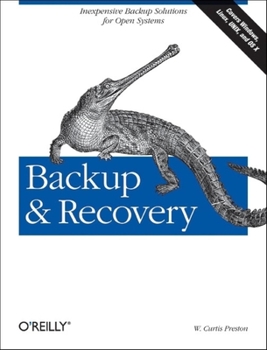Backup & Recovery: Inexpensive Backup Solutions for Open Systems
Select Format
Select Condition 
Book Overview
Backup & Recovery starts with a complete overview of backup philosophy and design, including the basic backup utilities of tar, dump, cpio, ntbackup, ditto, and rsync. It then explains several open source backup products that automate backups using those utilities, including AMANDA, Bacula, BackupPC, rdiff-backup, and rsnapshot. Backup & Recovery then explains how to perform bare metal recovery of AIX, HP-UX, Linux, Mac OS, Solaris, VMWare, & Windows systems using freely-available utilities. The book also provides overviews of the current state of the commercial backup software and hardware market, including overviews of CDP, Data De-duplication, D2D2T, and VTL technology. Finally, it covers how to automate the backups of DB2, Exchange, MySQL, Oracle, PostgreSQL, SQL-Server, and Sybase databases - without purchasing a commercial backup product to do so.
For environments of all sizes and budgets, this unique book shows you how to ensure data protection without resorting to expensive commercial solutions. You will soon learn to: Automate the backup of popular databases without a commercial utility Perform bare metal recovery of any popular open systems platform, including your PC or laptop Utilize valuable but often unknown open source backup products Understand the state of commercial backup software, including explanations of CDP and data de-duplication software Access the current state of backup hardware, including Virtual Tape Libraries (VTLs)





